From 1994 to 1997, Gargoyles was one of the most popular cartoons on TV for a generation of millennials. Behind the scenes of the greatest cartoons my childhood was Greg Weisman, creator of Gargoyles, and a great team of writers who gave Disney one of their most thoughtful, progressive, and memorable series to this day. Twenty years later Gargoyles lives on, and I talked with Greg about creating the series, what went on behind the scenes, and legacy his series left behind.
Black Nerd Problems: We’re obviously going to talk Gargoyles because that’s one of my favorite cartoons of all time, but you have a lot of popular titles under your name. Which are you most proud of having been a part of?
Greg Weisman: Gargoyles, because I basically created it (though not in a vacuum or without help from many talented people). It was an original property, not based on an existing franchise. And I’m proud and sometimes still stunned we were able to get it on the air. Even at the time I knew it was something special, and it’s still the show I consider my baby.
I’m proud of my novels, Rain of the Ghosts and Spirits of Ash and Foam for many the same reasons. And also because the solo achievement of writing an entire novel is pretty fulfilling.
I’m also proud of The Spectacular Spider-Man, W.I.T.C.H. and Young Justice, just because I think they really turned out well.

BNP: I want to talk about your original concept for Gargoyles. The first season of the show was mostly written by Brynne Chandler and Michael Reaves, and obviously set a foundation for what would be a strong series. How was the first season similar or different from what you originally conceptualized for the show? Were there any significant differences, and how did you feel about them?
Greg: During season one, all the writers – including Brynne and Lydia Marano (and a few others) – were working under Michael’s supervision. And Michael was working under my supervision. We broke all the stories together, and I came up with most of the springboards myself and did the final, final pass on every script after Michael was done. So there’s no dichotomy between what we set out to do and what we did. It was exactly what we hoped it would be. Just better than we ever imagined. (Though, of course, I’m biased.)
BNP: In Gargoyles in particular, what are some of the themes you wanted to resonate with viewers?
Greg: There were obvious themes, like “Don’t judge a book by its cover.” Themes of overcoming prejudice, bias, etc. There were themes about immortality, themes about integrity. These are all things that mean something to me personally. But I also don’t like to get bogged down with questions of theme too often. I like the characters to live and breathe and tell the stories they want to tell. We can figure out the theme later. This is even truer for me now than it was then. Back then, I’d use those one-word episodic titles to help me keep focused on an episodic theme, because I was told over and over how important that was. Now, when a network executive asks me about theme, I have to be careful not to roll my eyes.
BNP: Were there particular morals you wanted to take precedent in the series?
Greg: Dictating morals to other people makes me squirm, because I don’t like that stuff being dictated to me, I suppose. But again, there were obvious things that I felt were important. “Content of character” stuff. And integrity issues.

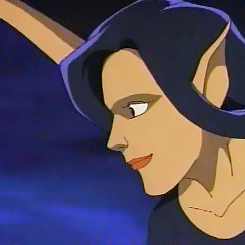
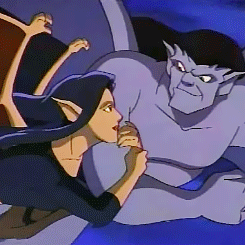
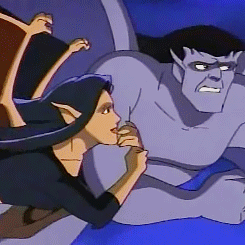
BNP:
And was diverse representation a specific goal?Greg: Diversity was always important to me, but working on Gargoyles was where the problem of a lack of diversity in cartoons first sort of crystalized for me. Things we were doing casually, like making Elisa Maza a woman of color, were being hailed as revolutionary, which was both cool and disappointing at the same time. But it got me to focus on those issues. To avoid always falling back on the kneejerk white straight male thing every time – even though I personally am a white straight male. My work in this area is constantly evolving, as well. I think I’ve gone from having my eyes opened a bit on Gargoyles to being semi-evolved today. I’m still hoping to be fully evolved at some point in the future.
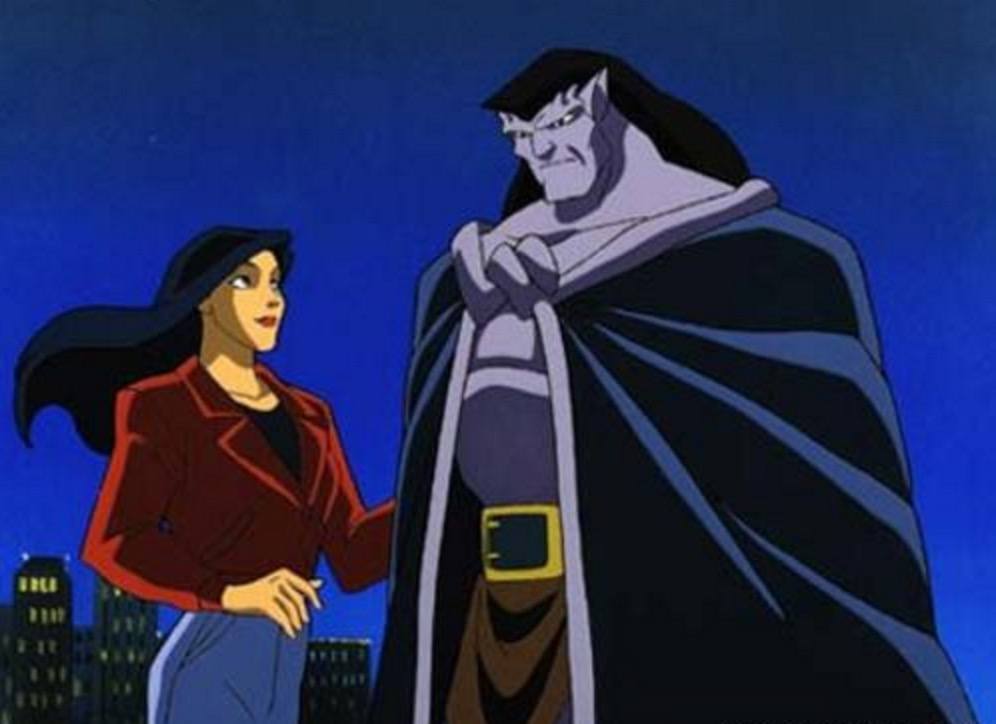
BNP: How much weight do you put into how Gargoyles is remembered? What do you want fans to remember most 30 years down the line?
Greg: First and foremost, that the show was good. That we told great stories, featuring fully realized characters (even in relatively minor roles). I’m particularly proud of our two lead villains, Xanatos and Demona, who I think were unlike any other villains on television in those days. But I also adore our heroes. And I’m a sucker for romance, so the Goliath/Elisa relationship has always made me smile. I’m also proud of the series expanding universe of true history, multi-cultural mythology, fantasy, science fiction, Shakespeare, etc.
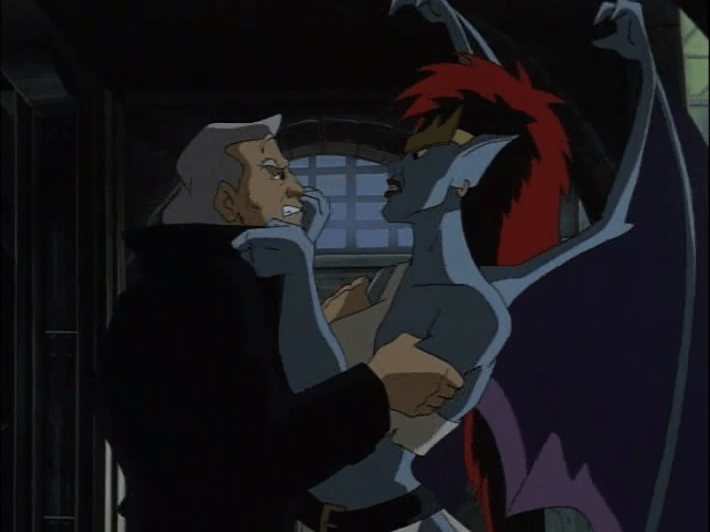
BNP: The final season of Gargoyles is often considered the weakest of the three. How do you feel about the Season 3 in hindsight? Can you describe the trajectory it took with a new staff of writers, and how you felt as the series came to an end?
Greg: I don’t view The Goliath Chronicles as canon to the series. Most of the fans agree with me. After being replaced as producer, I didn’t work (much at all) on that season. I was hired to be a consultant, but the new writing staff took none of my positive suggestions, i.e. the “Do this…” kinda thing. On occasion, they abided by some of my negative suggestions, such as “For the love of God, don’t do THAT!” But in general, it was very painful for me. I wrote the first episode myself, but I hate how the story was reedited after I left. And as for the other twelve episodes, I’ve seen each of them exactly once (back when they first aired in 1996-1997). There’s not one episode in the twelve that I liked, though every now and then there was a moment that worked for me.
I don’t blame the new writers or story editors. Their schedule was so tight, they literally didn’t have the time to watch more than a couple episodes of the first two seasons. There was no way for them to grasp the nuances of such a large cast of characters. And I don’t think the new producer who took the place of myself and Frank Paur was interested in telling the kinds of stories that we had told over the first two seasons. I’m not sure ABC was interested in that either. [ABC aired Goliath Chronicles on Saturday mornings, as opposed to our first two seasons, which aired in syndication on weekday afternoons.] The network wanted the marquee value of the Gargoyles name. But not our brand of storytelling.
BNP: You’ve written for a variety of media, including TV, comics, and novels. When you have a new story idea, what’s the first medium that comes to mind? Which do you find most natural, and which the least?
Greg: My business rarely works that way. I have tons of ideas, but I have bills to pay, etc., so it’s more about what a studio or a network or a comic book company or a gaming company or whatever wants to hire me to do. They tell me; I don’t get to tell them. When I do attempt to develop something original, either on my own or with partners, then my first thought is usually animation, because that’s the bulk of my experience. But, for example, I originally conceived Rain of the Ghosts as an animated series. And while I was at DreamWorks, we sold it to Nickelodeon. Ultimately Nick decided not to make it, but by that time, all the ideas had really taken possession of me. So I bought the property back from DreamWorks and decided to rework Rain as a series of novels.
BNP: On a podcast interview, you once said — and I’m paraphrasing — that you’ve knowingly made decisions that would piss off viewers, and that the fun was in winning them back with the rewards that followed. What is your favorite plot twist — in Gargoyles or otherwise — that received initial backlash but followed with positive reception or validation?
Greg: I’m not sure about “favorites.” One that worked pretty spectacularly was the decision we made in Season One of The Spectacular Spider-Man to make the identity of the Green Goblin a mystery. That’s what Stan and Steve did in the sixties, and I wanted to recapture that feeling. The dilemma was that there had just been a major blockbuster hit motion picture that revealed Gobby as Norman Osborn. So how do you make a mystery over something that everyone knows the truth about already? Answer: create misdirection but played fair. [SPOILER WARNING!] We convinced (at least a large portion of) our audience that the Goblin was Harry Osborn instead of Norman. This was at least somewhat believable as a choice we might make, since Harry had been the Green Goblin for a time in the comics. But it did piss a bunch of people off. (And if we had been cancelled after the first season, they’d probably still be pissed.) Then in season two, we demonstrated exactly how we had fooled Spidey, Harry and the audience, as we revealed that Norman was in fact the Goblin. Ta da! The feeling you’re trying to elicit from your viewer is: “I didn’t see that coming – but of course!”
BNP: How do you define your success as a writer? Has that definition changed over the course of your career?
Greg: It’s fairly schizophrenic, frankly. On the one hand, I have a substantial body of work that I’m very proud of. But on the other hand, both in terms of finances and the power within the industry to get things done the way I want them done, I don’t think I have a “career” at all. I’ve done a series of jobs, some of them great jobs. But the word “career” implies a trajectory, implies one job building on another. And that just hasn’t happened for me. I’m constantly starting over. Constantly. I’ve had entire years without gainful employment. I’ve had multiple financial crises, and I don’t live extravagantly. It’s a very tough, emotionally bruising life. But back on the first hand, when something like Gargoyles or Young Justice is working, it’s a great feeling.
BNP: What are you working on now and how can fans of your work support it?
Greg: Without exaggerating, I have something like eleven jobs right now. My day job is working on the second season of a Nick pre-school series called Shimmer & Shine. I’m also writing two comics for Marvel, Star Wars Kanan and Starbrand & Nightmask. I’m very proud of both these books, and I hope fans will check them out. I also hope they’ll check out my novels, Rain of the Ghosts and Spirits of Ash and Foam, and especially the full-cast unabridged AudioPlay version of Rain, which features twenty actors (including Brent Spiner, Ed Asner and Marina Sirtis), sound effects and an original musical score. It’s available for purchase and download now at Gumroad.com/RainoftheGhosts. Finally, a Gargoyles cinestory volume, adapting our five-part pilot story is coming out from Joe Books soon. Hopefully, it’ll lead to new, original Gargoyles materials down the line.
BNP: Finally, what advice would you pay forward to creatives out there who are planning to follow your career path as a writer?
Greg: Well, first, I’d ask them if they could be happy doing anything else. Because if they can, they should. That doesn’t mean, “Don’t write.” But making a career of it means surviving a constant series of “auditions” and rejection. And one can always make writing a hobby. He or she can even publish (or self-publish) fairly easily these days. But if one’s primary source of income can come from some other source, I’d say live happier by pursuing that as a career path…
Still, if you’re like me, and you really couldn’t be happy doing anything else, then my first advice is get a solid education. Read. Read some more. Read the classics. Read newspapers. Read everything. Write. Write some more. Write all the time, every day. And for God’s sake, proofread, proofread, proofread! Next, move to where the work is. After you’re a proven commodity, maybe (maybe) you can then move to wherever you like and email stuff in. But until you’ve “made it,” you need to be where the work is. Someplace where you can come in and meet with people, network, etc. You need talent, skill, luck and good timing. So maximize your chances in every way possible.
Are you following Black Nerd Problems on Twitter, Facebook, Tumblr or Google+?





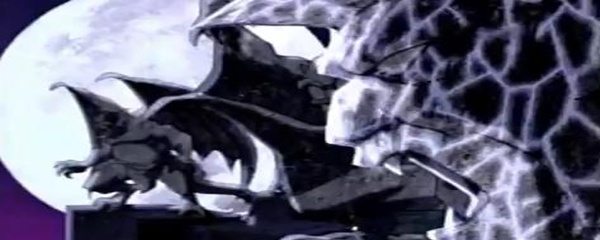
Show Comments
Marcelo
We need more Young Justice
Melanie
We need more Gargoyles too.
Ale Allegranzi (@aallegranzi)
Great interview!